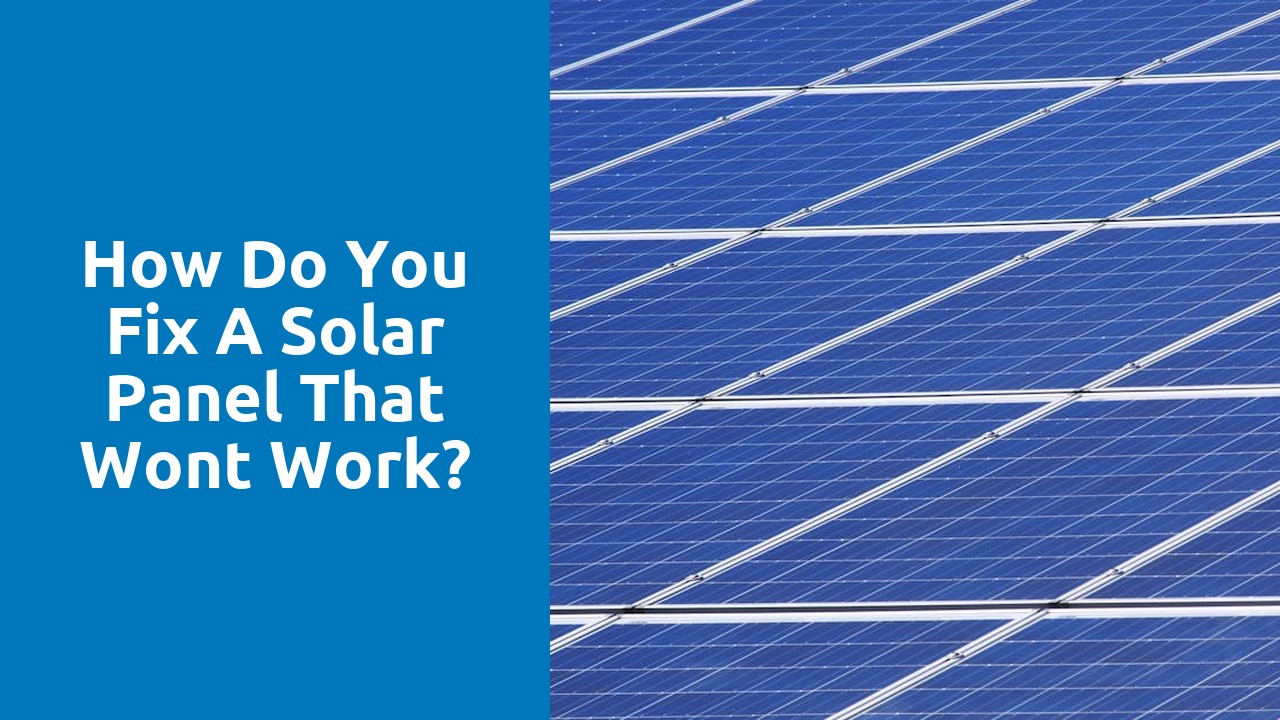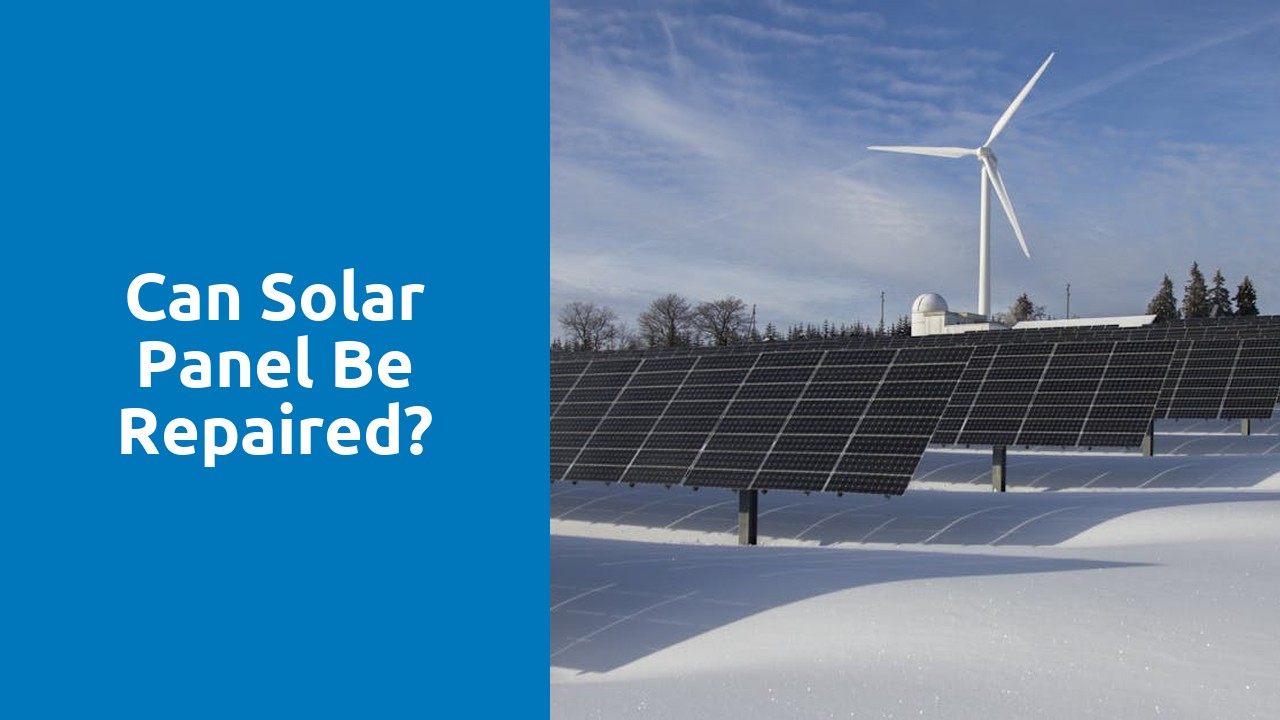
Optimizing Solar Panel Angle
To ensure optimal performance of your solar panel system, it's crucial to find the right angle for your panels. The angle at which your solar panels are positioned can greatly affect the amount of sunlight they receive, which in turn impacts the amount of energy they can generate. In order to maximize solar energy production, it is recommended to position your panels at an angle that is equal to your latitude. This means that for locations closer to the equator, panels should be positioned at a lower angle, while for locations further from the equator, panels should be set at a higher angle. Properly adjusting the angle of your solar panels is a key step in Solar Panel Repair, ensuring that they are able to capture as much sunlight as possible for efficient energy generation.
Adjusting for Maximum Sun Exposure
To ensure maximum efficiency from a solar panel system, it is crucial to adjust the panel's angle and position for optimal sun exposure. Throughout the day, the sun's position changes, so it is essential to regularly check and adjust the panel to receive direct sunlight. Positioning the solar panel so that it faces directly towards the sun during peak sunlight hours will significantly increase the amount of energy it can generate. This simple adjustment can make a considerable difference in the overall performance and output of the solar panel system. Properly positioning the solar panel is a fundamental step in solar panel repair and maintenance, ensuring that it operates at its highest capacity.
Verifying Solar Panel Controller Operation
While working on troubleshooting a solar panel that’s not functioning properly, one crucial step is to verify the operation of the solar panel controller. The solar panel controller plays a vital role in regulating the power flow from the solar panels to the battery. To begin, check if the solar panel controller is receiving the necessary power supply and ensure that all connections are secure and free from any damage. This step is essential in diagnosing any potential issues that may be hindering the proper operation of the solar panel system. As you delve into the verification process, keep in mind that a malfunctioning solar panel controller can significantly impact the overall efficiency of the solar panel system, hence pinpointing and rectifying any faults is imperative for effective Solar Panel Repair.
Furthermore, make sure to inspect the display panel of the solar panel controller for any error messages or irregular readings. If you notice any discrepancies in the data being displayed, it could indicate a problem with the controller. Utilise the user manual provided by the manufacturer to cross-reference the displayed information with the expected values for normal operation. This meticulous examination of the solar panel controller's display can provide valuable insights into any underlying issues that may require attention during the Solar Panel Repair process. By methodically assessing the functionality of the solar panel controller, you can enhance the chances of identifying and resolving the root cause of the problem, thereby paving the way for a successful repair outcome.
Testing Charge Controller Functionality
When it comes to troubleshooting solar panel issues, testing the charge controller functionality is a crucial step. The charge controller is a key component in regulating the power flow from the solar panels to the battery. To verify the operation of the charge controller, start by checking the connections to ensure they are secure and free from any damage. Additionally, use a multimeter to measure the voltage at the input and output terminals of the charge controller to confirm that it is functioning correctly.
If the charge controller is not working as expected, it can cause issues with the entire solar panel system. Therefore, it is essential to address any problems with the charge controller promptly to ensure optimal performance. By conducting thorough testing of the charge controller functionality, you can identify and rectify any issues that may be affecting the performance of your solar panel system, ultimately leading to successful solar panel repair.
Verifying Battery Health
When troubleshooting a malfunctioning solar panel, it is crucial to verify the health of the battery connected to the system. A key step in the process of Solar Panel Repair is ensuring that the battery cells are in good condition. Start by inspecting for any signs of physical damage or corrosion on the battery terminals. Additionally, check the electrolyte levels in each cell and top up with distilled water if necessary to maintain optimal functioning.
Another important aspect to consider when verifying battery health is to monitor the voltage levels of the battery. Using a multimeter, measure the voltage across the terminals to ensure that it is within the normal range for the type of battery being used. If the voltage readings seem abnormally low, it may indicate that the battery is not holding a charge effectively and might need to be replaced to restore the functionality of your solar panel system.
Ensuring Battery Cells are in Good Condition
To ensure that your solar panel is operating efficiently, it is crucial to inspect the condition of the battery cells regularly. The health of the battery cells directly impacts the overall performance of the system. In the event of a solar panel repair, checking the battery cells should be a priority as they are essential for storing and supplying energy generated by the panels. Damaged or deteriorating battery cells can lead to a decrease in energy storage capacity and may result in the solar panel not working optimally.
Regular maintenance and inspection of the battery cells are essential to prolong the lifespan of the solar panel system. By ensuring that the battery cells are in good condition, you can maximise the efficiency and performance of your solar panel setup. If any issues are identified during the inspection, prompt action should be taken to rectify the problem and prevent further damage to the system. Remember, proper care and maintenance of the battery cells are key to the successful operation of your solar panel system.
FAQS
What should I do if my solar panel is not generating enough electricity?
If your solar panel is not generating enough electricity, you can start by optimizing the angle of the panel to ensure maximum sun exposure.
How can I adjust the solar panel for maximum sun exposure?
To adjust your solar panel for maximum sun exposure, you can change the angle and direction of the panel to capture the most sunlight throughout the day.
What should I do if my solar panel is still not working after adjusting the angle?
If your solar panel is still not working after adjusting the angle, you should verify the operation of the solar panel controller to ensure it is functioning properly.
How can I test the functionality of the solar panel controller?
You can test the functionality of the solar panel controller by checking if it is receiving power and if it is sending the right signals to the solar panel for optimal performance.
What steps can I take to ensure the health of the battery connected to the solar panel system?
To ensure the health of the battery connected to the solar panel system, you should verify the condition of the battery cells and make sure they are in good working order for efficient energy storage.
